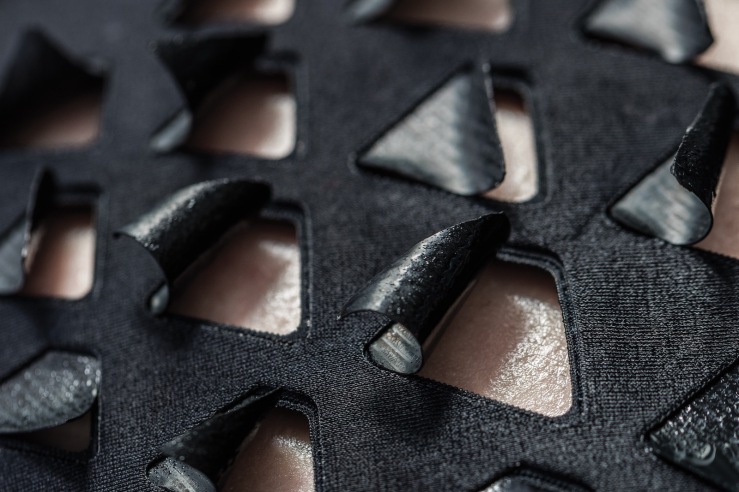
Lining Yao – “bioLogic”
After listening to Lining Yao speak at the BMA last week, I have been thinking more about the possibilities for merging technology with nature. Yao spoke about her interest in the natural world, that began during her childhood in Mongolia and has led her career in design and science. The technology in her work is derived from close observation of the inherent properties of natural organisms. Her ‘bioLogic’ material uses natto bacteria to control the opening and closing of flaps on garments, in accordance to the temperature and humidity of the person wearing the outfit. Therefore, the clothing is adaptive to the user’s natural state, and acts as two garments instead of one.

Shuhei Hasado – “Haptic Geta”
Geta = Japanese sandal that is typically worn barefoot
Haptic = relating to, or pleasant to the sense of touch
Interested in the way that geta allows its users to have a ‘sensitized experience of the natural world,’ Hasado designed shoes with various natural materials (wood, soil, grass, stone) on the surface of the sandal, where the foot and the shoe meet. These textures take advantage of our sensory nerves to create the illusion of walking barefoot on nature. I’m interested in how Hasado is borrowing natural textures from living organisms/geology to create products that encourage us to consider our connection to the planet.
Yung Ho Chang (atelier FCJZ) – Lotus Leaf Tray
Product design derived from a digital scan of a dried lotus leaf. Natural textures of the leaf’s veins serve as the structure of the tray, allowing it to stand and creating a tactile appearance. I’m interested in how the scanning acts to preserve an ephemeral, natural object (and action) that would otherwise wither and decompose in nature. The act of scanning, copying, and preserving all express human interests in exerting control over objects, and over the passing of time.

The use of photogrammetry to capture and replicate natural textures is something that really interests me. I’ve scanned organic objects in the past, which were then translated into 3d printed objects and molds, and this is something that I would like to continue to explore. The act of making a copy is something that I already explore in my practice, through the use of mold-making, but the added element of physical->digital->physical would definitely open up areas for further research and elaboration in design.
Of its many applications, I’m most interested in the use of photogrammetry within the fields of geology (to quickly and cost-efficiently obtain models of land masses), archaeology (to produce plans of large or complex sites), and by meteorology (to determine the actual wind speed of a tornado where objective weather data cannot be obtained.)

